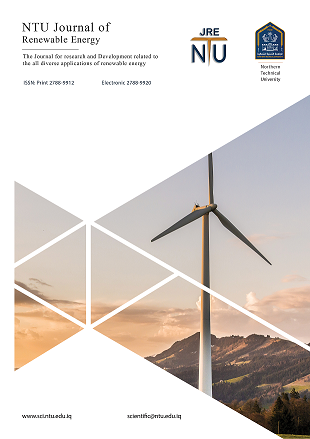An analysis of the productivity of an active solar still vs. a passive solar still over the autumn and winter seasons in the city of Kirkuk, Iraq
DOI:
https://doi.org/10.56286/4dhyse03Keywords:
: passive, active, solar still, evacuated tube collector, productivity.Abstract
Solar distillation is seen as a sustainable and practical way to solve water shortages in rural regions, which are experiencing an increase in demand for clean water. Over the course of four months in the autumn and winter, experiments were carried out in Kirkuk, Iraq, located at 35.4666° N, 44.3799° E. We directly inserted eight vacuum tubes into the solar still to boost the passive still's production. The area of it is 1 square meter. The productivity recorded in each month was as follows: 1208 ml in November, 2653 ml in December, 2541 ml in January, and 1794 ml in February. In comparison to the passive still, productivity rose by 277.5%, 237.5%, 245.7%, and 233%, respectively. In comparison to the passive still, which achieved an efficiency of 16%, the thermal efficiency increased to 18.6%, 18.8%, 24.8%, and 36%, respectively.
Downloads
Published
Issue
Section
License
Copyright (c) 2024 NTU Journal of Renewable Energy

This work is licensed under a Creative Commons Attribution 4.0 International License.








